In Norse mythology, a valkyrie was a beautiful winged woman. She would descend to battlefields to pick which of the slain could go back with her to Valhalla – the Viking equivalent of heaven where you got to drink mead all day and pal around with other Vikings.
Grendel was a monstrous brute depicted in the Anglo-Saxon epic poem Beowulf. A descendent of Cain, he spent 12 years attacking mead drinkers until Beowulf ripped his arm off with his bare hands. Our hero later followed up that act with a good old-fashioned decapitation.
Whether you should prefer the 224 Valkyrie or the 6.5 Grendel may depend entirely on your stance on mead. But if you would rather base your ammo preferences on something a little less … stupid, then you’ll want to read on. It’s 224 Valkyrie vs 6.5 Grendel time!
224 Valkyrie vs. 6.5 Grendel
The 224 Valkyrie is a faster moving caliber than the larger 6.5 Grendel. As a result, the Grendel delivers more energy on the target than the 224 Valkyrie at short distances but starting at around 400 yards, the Valkyrie packs a better punch. The 224 Valkyrie’s recoil is a little lighter than the Grendel too, which may make it ideal for situations that require more than a single shot.
Origins
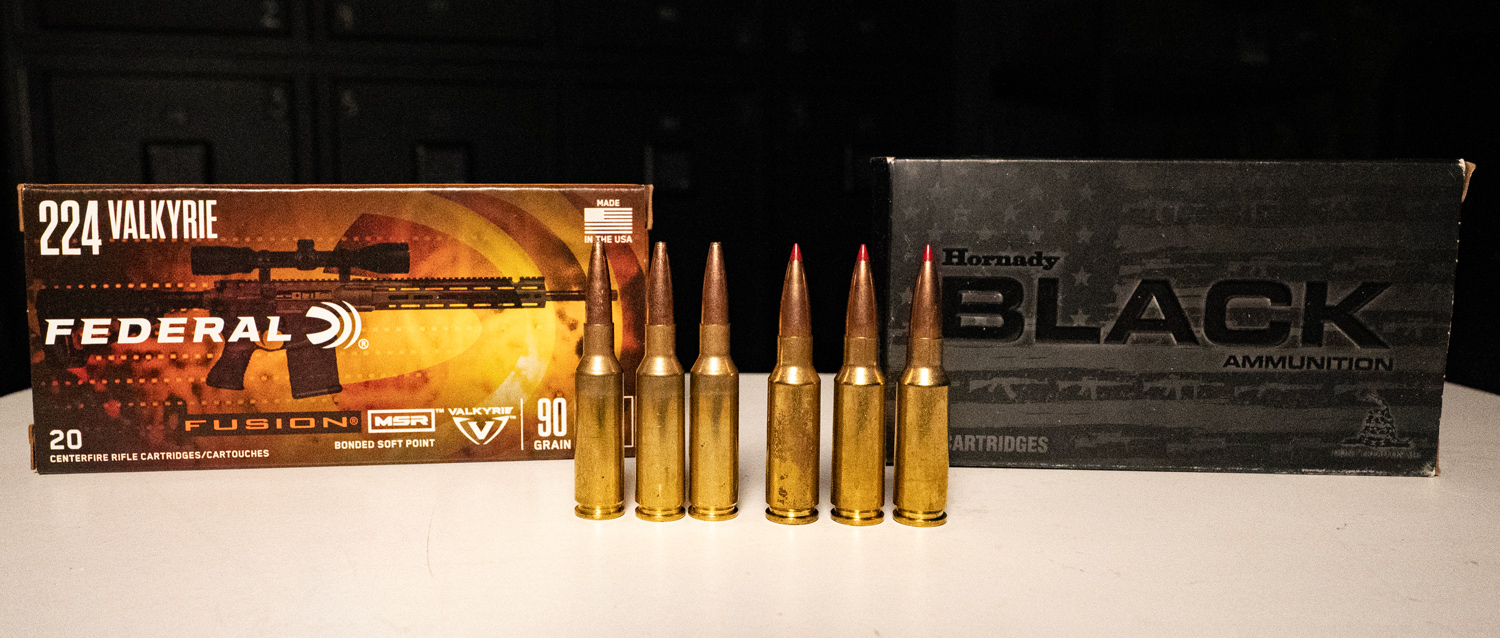
The good folks at Federal Premium conceived of 224 Valkyrie as a long distance shooting cartridge with ballistic performance analogous to the 22 Nosler, but also compatible with AR-15 type rifles. They designed the round in 2017 by necking down a 6.8 SPC case to seat a .22 caliber bullet. Its long and thin bullet grants 224 Valkyrie an innately high ballistic coefficient, which shooters soon discovered suits it as well for hunting medium game as it does recreational long distance shooting.
Alexander Arms designed the 6.5 Grendel in 2003. Their goal was to deliver better ballistics than the 5.56×45, expressly at ranges between 200 and 800 yards. In order to keep their new round’s length compatible with NATO spec magazines, they based its case on that of the broad 220 Russian. Once equipped with a 123 grain bullet the 6.5 Grendel offers ballistic performance intermediate to the 5.56 and 308.
Specs Comparison
| 224 Valkyrie | 6.5 Grendel | |
|---|---|---|
| Parent case | 6.8 SPC | 220 Russian |
| Case type | Rimless, bottlenecked | Rimless, bottleneck |
| Bullet diameter | 0.2245 in | 0.264 in |
| Neck diameter | 0.2560 in | 0.293 in |
| Shoulder diameter | 0.4031 in | 0.428 in |
| Base diameter | 0.4207 in | 0.439 in |
| Rim diameter | 0.422 in | 0.44 in |
| Rim thickness | 0.049 in | 0.059 in |
| Case length | 1.6 in | 1.52 in |
| Overall length | 2.26 in | 2.26 in |
| Case capacity | 34.5 gr H2O | 35 gr H2O |
| Maximum pressure | 55,000 psi | 52,000 psi |
On paper we see two very similar cartridges with virtually identical case capacities and thus room for propellant. SAAMI’s max pressure for the 224 Valkyrie is about 5.8 percent higher, which isn’t a gargantuan difference. The 224 Valkyrie’s bullet also tends to be lighter than the 6.5 Grendel’s bullet – and as you may well know, exactly how a bullet’s weight is distributed depends heavily on its diameter.
The key difference between the two rounds is their bullet diameters: At 0.2245” the 224 Valkyrie is a true .22 caliber round, while the 6.5 Grendel’s 0.264” diameter bullet is significantly wider. We can expect these two rounds to offer different ballistic coefficients (essentially a measure of a bullet’s aerodynamics, where a higher number is better) as the result. We should also expect the 224 Valkyrie’s smaller diameter bullet to incur less drag in flight, giving it a greater ballistic coefficient and thus higher retained velocity downrange, more energy to deliver on impact, and even improved resistance to wind drift.
224 Valkyrie vs 6.5 Grendel Ballistics
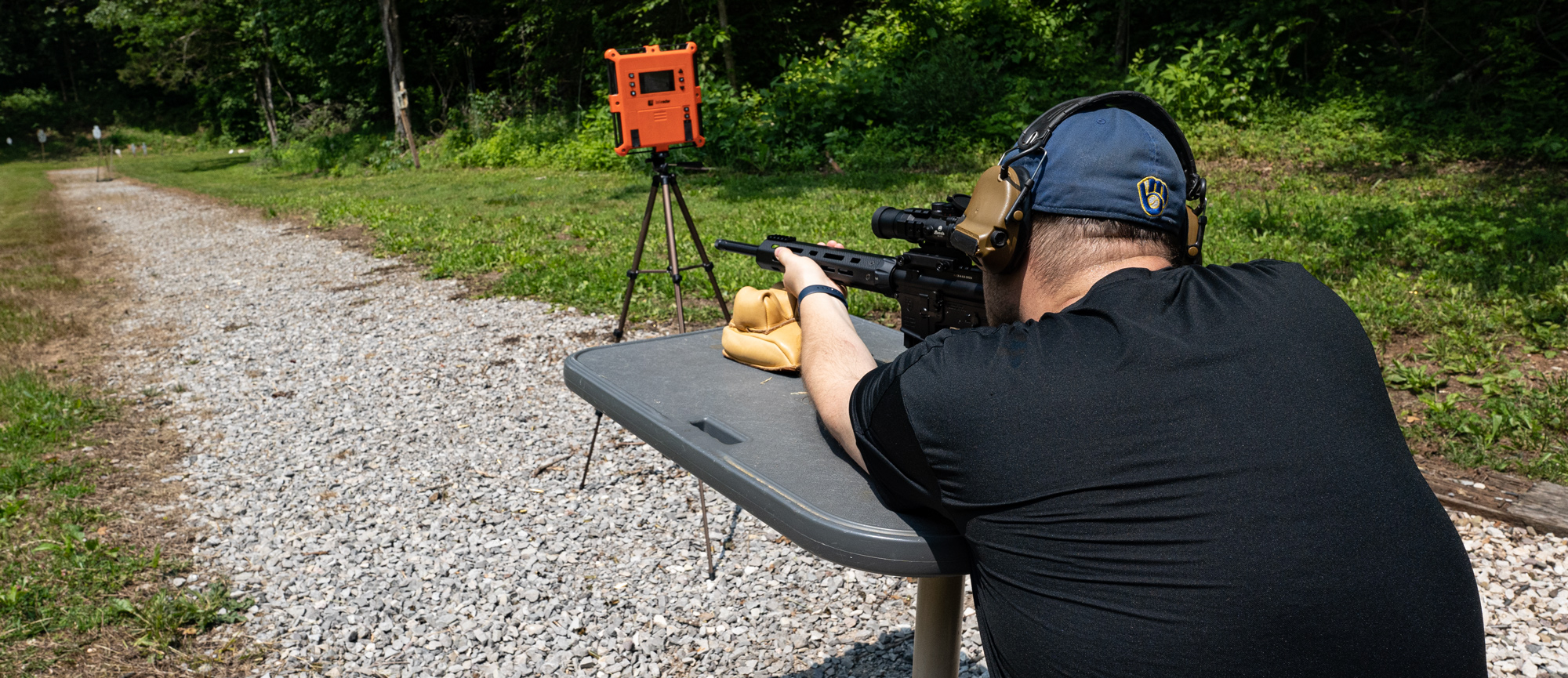
It’s hard to do an apples to apples comparison of two different cartridges, so we’re going to lay out a few of Federal’s and Hornady’s similar (as possible) rounds side by side and draw some conclusions from the exercise. (We’re comparing all rounds’ performance when zeroed in on a 1,000 yard target.)
| 224 Valkyrie Federal Fusion 90 gr SP | 6.5 Grendel Federal Fusion 120 gr SP | |
|---|---|---|
| Muzzle velocity (fps) | 2700 | 2600 |
| Velocity @ 100 yds | 2498 | 2351 |
| Velocity @ 200 yds | 2305 | 2115 |
| Velocity @ 300 yds | 2120 | 1894 |
| Velocity @ 400 yds | 1945 | 1689 |
| Velocity @ 500 yds | 1778 | 1502 |
| Velocity @ 600 yds | 1623 | 1337 |
| Velocity @ 700 yds | 1479 | 1200 |
| Velocity @ 800 yds | 1350 | 1096 |
| Velocity @ 900 yds | 1237 | 1020 |
| Velocity @ 1000 yds | 1145 | 962 |
| G1 ballistic coefficient | 0.439 | 0.346 |
| G7 ballistic coefficient | 0.24 | 0.177 |
By comparing the most similar representative cartridges available, we start to see the 224 Valkyrie’s distinctive advantage over the 6.5 Grendel: its ballistic coefficient. While neither round is a slouch in the long distance shooting department, and can both consistently peg 1,000 yard targets with ease, the 224 Valkyrie accomplishes this feat with greater velocities and flatter trajectories en route.
What’s more, in the 224 Valkyrie we see a round that consistently remains supersonic well beyond its competitor. Since transitioning from supersonic to subsonic velocity pretty soundly dashes a round’s accuracy, we can safely conclude that the 224 Valkyrie is the better round strictly in terms of its sniping capabilities.
Energy
| 224 Valkyrie Federal Fusion 90 gr SP | 6.5 Grendel Federal Fusion 120 gr SP | |
|---|---|---|
| Muzzle energy (ft lbs) | 1457 | 1802 |
| Energy @ 100 yds | 1247 | 1473 |
| Energy @ 200 yds | 1062 | 1192 |
| Energy @ 300 yds | 899 | 956 |
| Energy @ 400 yds | 756 | 760 |
| Energy @ 500 yds | 632 | 601 |
| Energy @ 600 yds | 526 | 477 |
| Energy @ 700 yds | 437 | 384 |
| Energy @ 800 yds | 364 | 320 |
| Energy @ 900 yds | 306 | 277 |
| Energy @ 1000 yds | 262 | 247 |
But it’s not enough for a bullet just to get to where it’s going in all cases. A deer hunter also wants it to get there with ample killing energy, and here the 6.5 Grendel’s heavier bullet has the 224 Valkyrie’s lighter one beat. The 6.5 Grendel usually delivers superior energy at all ranges, and while the 224 Valkyrie’s higher ballistic coefficient may let it deliver more energy over very long distances, its narrower bullet is still inclined to produce a smaller wound channel.
For varmint hunting the difference becomes kind of moot. A 60 ft lbs energy difference is meaningless from a groundhog’s perspective.
Recoil
It is difficult to compare recoil energy objectively. Measuring it requires four factors: bullet weight, bullet velocity, propellant charge weight, and firearm weight. Propellant weight is not constant across all types of cartridges, and all rifles are different. What’s more, the recoil a shooter actually perceives is subjective. But for the sake of comparison let’s assume the six rounds detailed above all have 30 grains of propellant and the rifle weighs 7.7 pounds.
| Recoil Energy (ft lbs) | |
|---|---|
| 224 Valkyrie Federal Fusion 90 gr SP | 6.36 |
| 224 Valkyrie Hornady 88 gr ELD Match | 6.12 |
| 224 Valkyrie Federal 80.5 gr OTM | 6.12 |
| 6.5 Grendel Federal Fusion 120 gr SP | 8.79 |
| 6.5 Grendel Hornady 123 gr ELD Match | 9 |
| 6.5 Grendel Federal 120 gr OTM | 8.84 |
The 6.5 Grendel delivers greater recoil in this strictly hypothetical experiment. We might have expected this of a round with a comparable muzzle velocity yet a substantially heavier bullet. Greater recoil is a price you pay for greater energy, but even if you find the 6.5 Grendel’s stronger kick disagreeable you could always compensate with a heavier rifle!
Availability & Price
Shop for rifles and parts for both cartridges and you’re bound to see why a 14 year head start matters: 6.5 Grendel barrels and bolts are all more freely available than the newcomer’s. That said, the 6.5 Grendel does come with an added inconvenience. Its bolts and barrels are available in two different types – I and II – and mixing two types is a recipe for disaster.
Some shooters take the price of ammo heavily into account. Here we’re happy to say that neither round is significantly more expensive than the other! Both 224 Valkyrie ammo and 6.5 Grendel are comparable in price to the more popular 308 Win. We hesitate to provide actual figures considering how volatile ammo prices are known to become.
The Takeaway on 224 Valkyrie vs 6.5 Grendel
The discussion of 224 Valkyrie vs. 6.5 Grendel boils down to which kind of bullet you prefer. The 224 Valkyrie’s narrower, lighter bullet offers a higher ballistic coefficient for superior accuracy at greater distances. The 6.5 Grendel’s wider, heavier bullet can not accurately reach the same distances, but it does typically plow into its target with greater energy. The 224 Valkyrie also delivers slightly less recoil, but maybe not so much as to impact your decision.
Now it is time for mead.

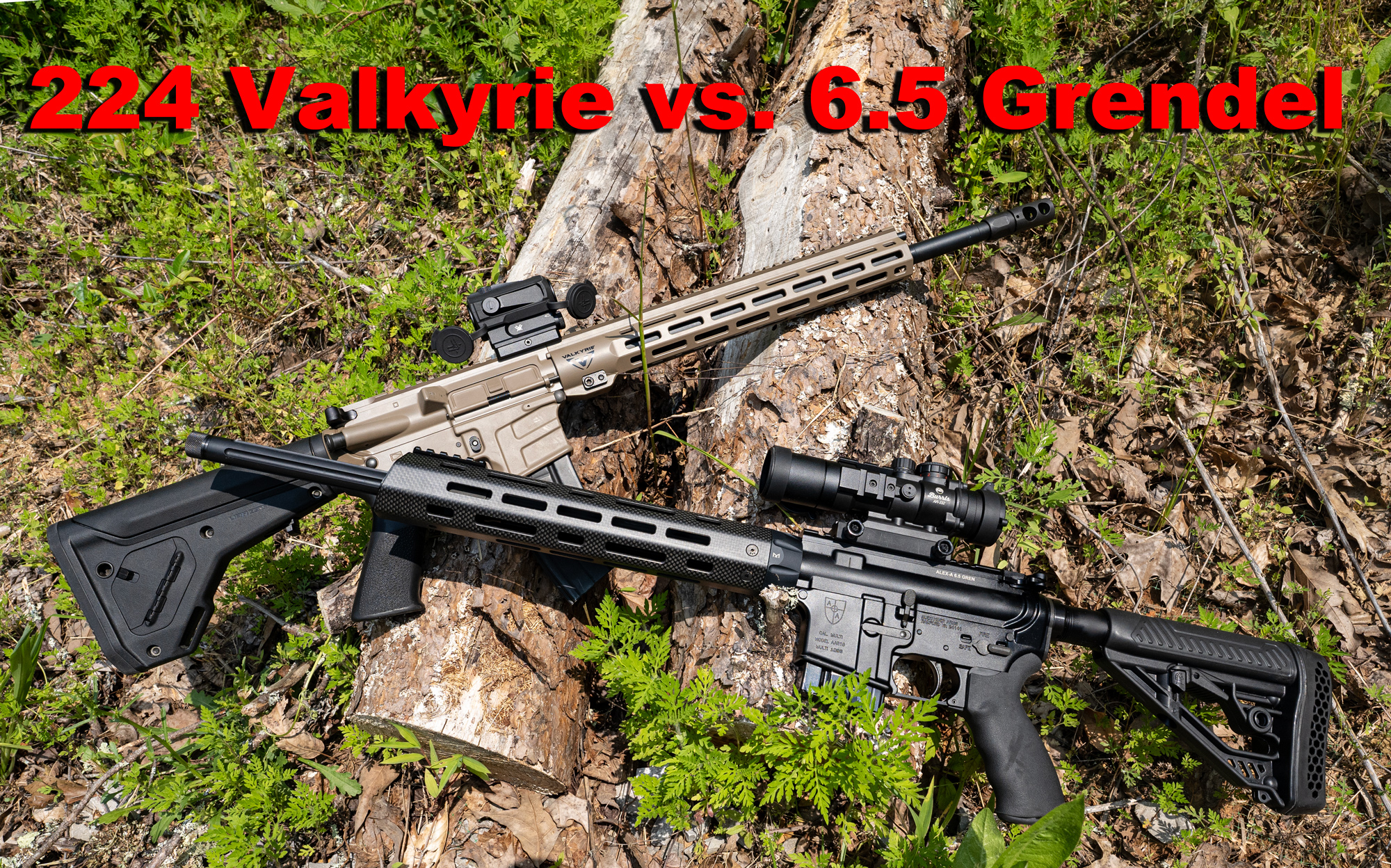
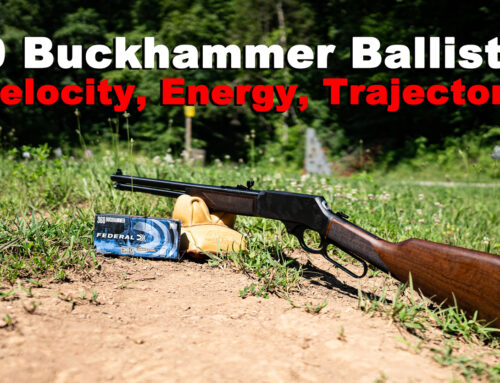
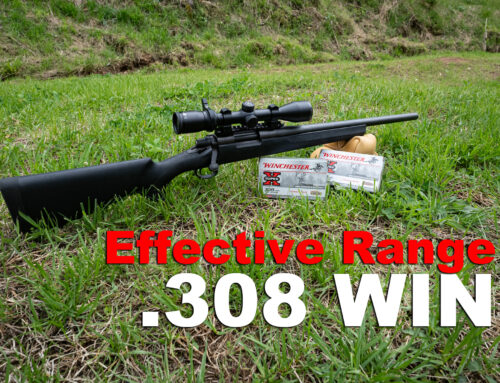

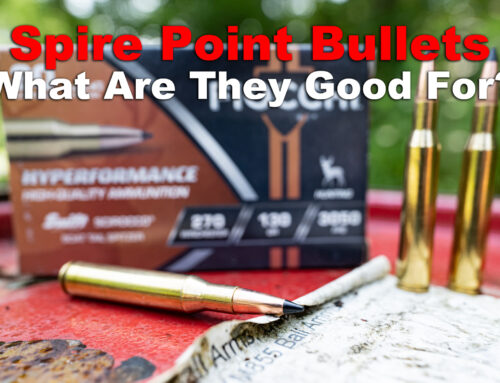
Leave A Comment